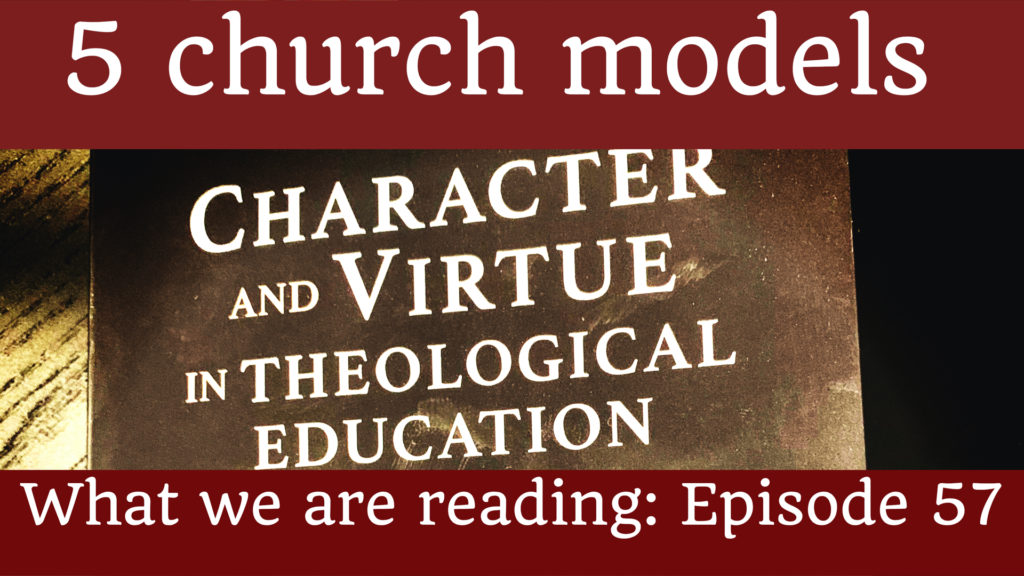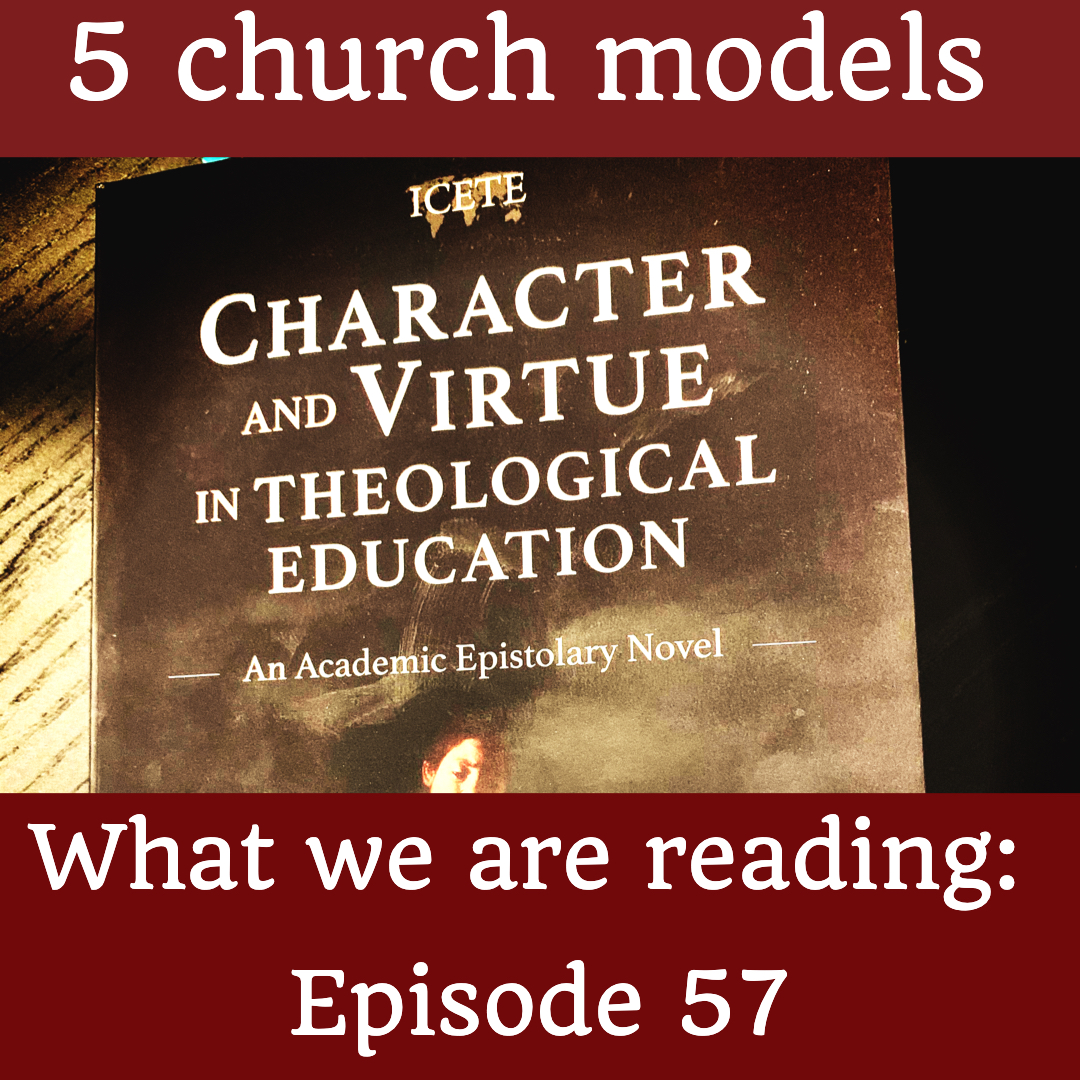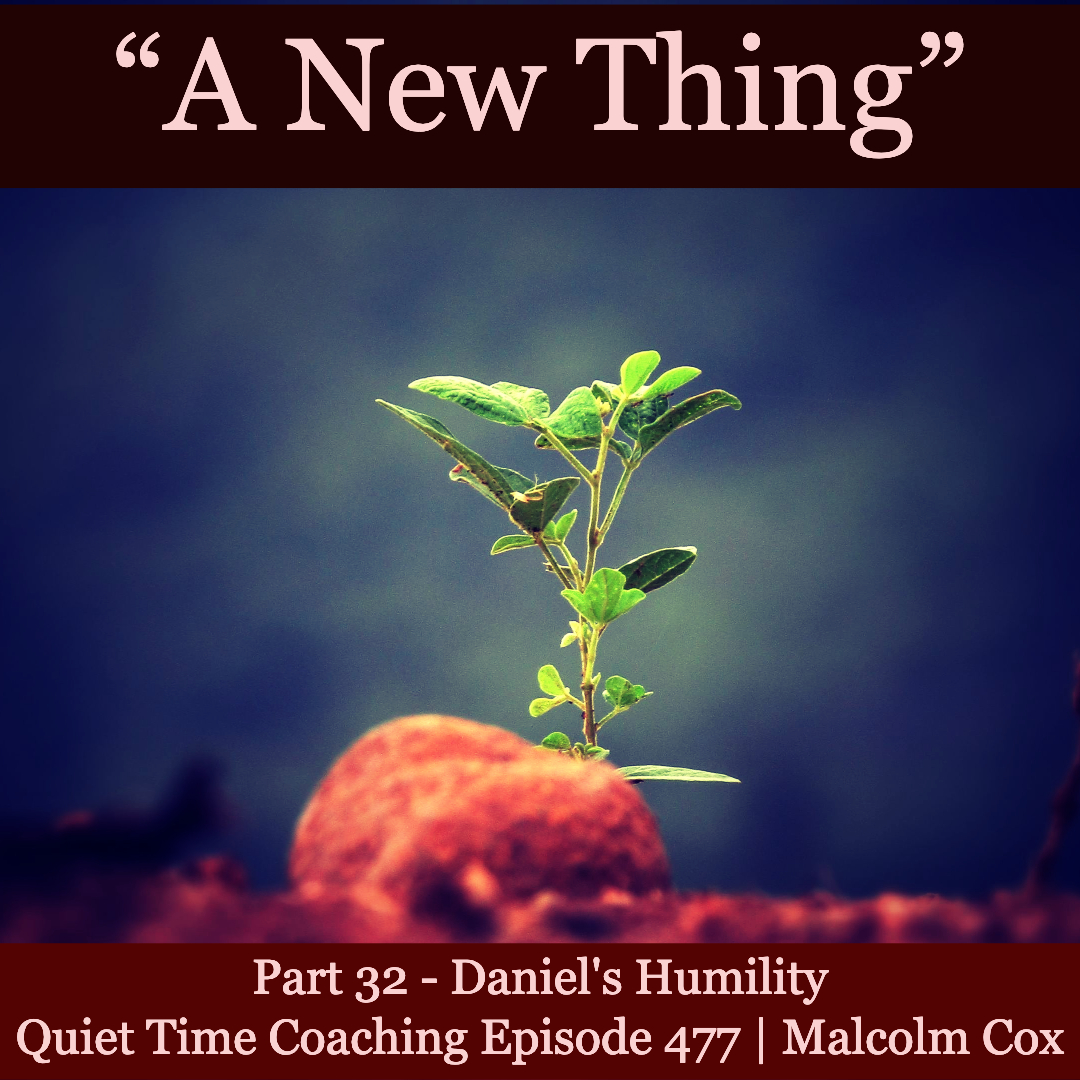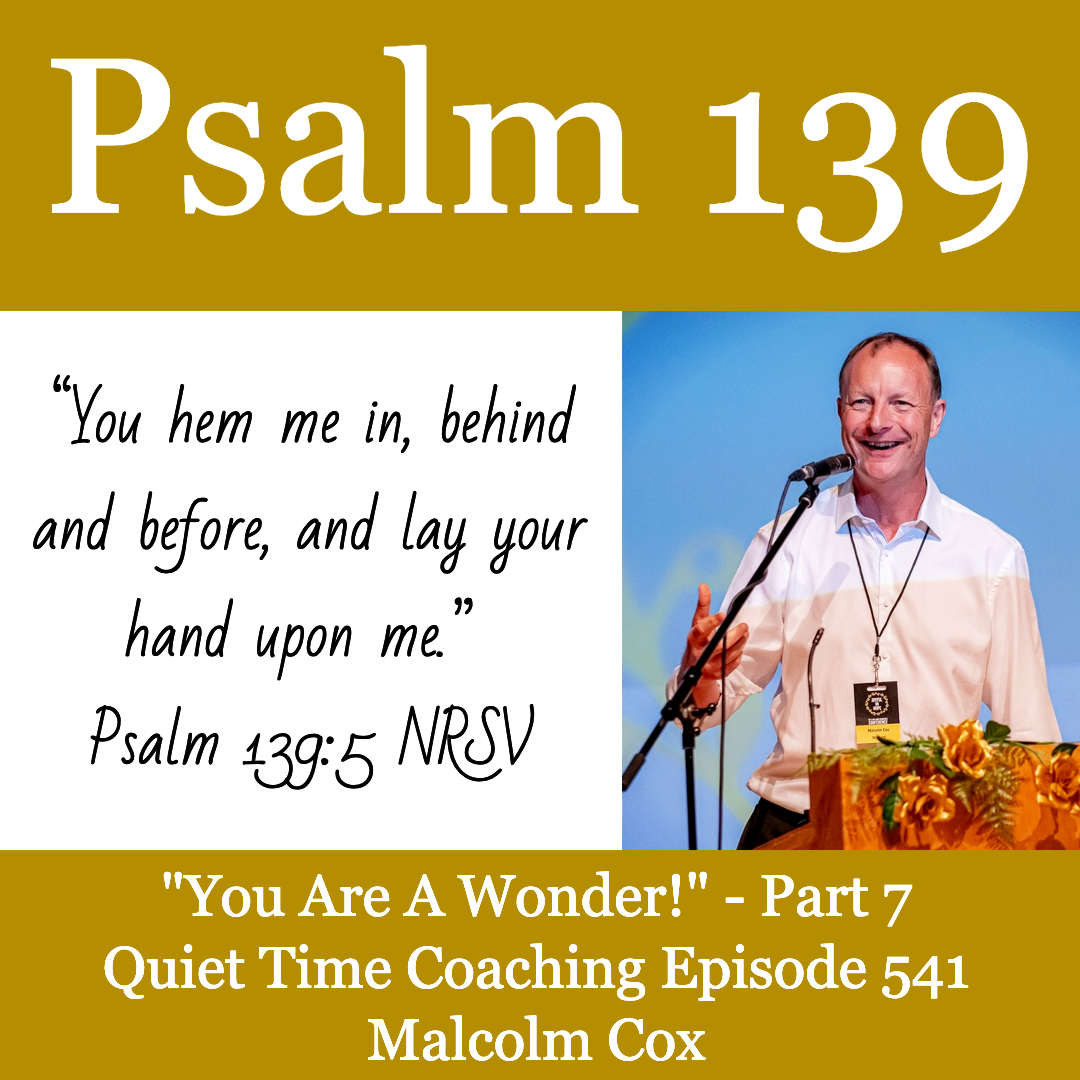What We Are Reading: Episode 57

Why I read this book
I am planning to begin a Master in theological education in April. The course leader is Marvin Oxenham. I always think it’s a good idea to get to know your course leaders and lecturers before starting a course, so I looked Marvin up online and discovered he had written, “Character and virtue in theological education”.
At some point I will do a full review of the book, but that will have to wait. It’s not the sort of book I read quickly. Currently I’m consuming one chapter a day (19 so far). There are 40 in total.
However, I was so taken with a section from chapter 11 (“What churches want”) that I thought I’d bring it to you in advance of the full review.
The heading is, “Five church models”. Each of these models sees its particular emphasis as the main purpose of the church. As you read the following descriptions, ask yourself the following questions:
- Which best describes your current congregation?
- Which fits your preferences?
- Which accords most faithfully to the biblical record as you see it?
Let’s have a brief look at a description of each model.
1. Love God and neighbour
“In this kind of church, leaders express love in all its dimensions, ranging from pastoral care to the transformation of culture.” p87
The primary scripture in support of this model could be from John 13:
““A new commandment I give to you, that you love one another, even as I have loved you, that you also love one another. “By this all men will know that you are My disciples, if you have love for one another.”” (John 13:34–35 NAS95)
Love being “the Queen of the theological virtues”, it is hard to argue with the primary nature of this model. If this is how the world will know that we are truly the followers of Jesus, then why would we want to prioritise anything above love?
2. Liberating persons and societies from oppression
“This vision embraces moral and social reform and those in leadership serve as agents of change, freeing both individuals and collectives from bondage.” p87
The scripture that comes to my mind when considering this model is one Jesus himself quoted at the beginning of his mission:
“…the book of the prophet Isaiah was handed to Him. And He opened the book and found the place where it was written, “THE SPIRIT OF THE LORD IS UPON ME, BECAUSE HE ANOINTED ME TO PREACH THE GOSPEL TO THE POOR. HE HAS SENT ME TO PROCLAIM RELEASE TO THE CAPTIVES, AND RECOVERY OF SIGHT TO THE BLIND, TO SET FREE THOSE WHO ARE OPPRESSED, TO PROCLAIM THE FAVOURABLE YEAR OF THE LORD.” And He closed the book, gave it back to the attendant and sat down; and the eyes of all in the synagogue were fixed on Him. And He began to say to them, “Today this Scripture has been fulfilled in your hearing.”” (Luke 4:17–21 NAS95)
If this was the vision of Jesus for his ministry, should it not also be the vision for the contemporary church? It certainly sounds like good news, and was viewed that way on the day Jesus visited the synagogue.
3. Creating and sustaining Christian identity
“For this tradition, maintaining identity is considered an urgent and important task in the midst of a quickly changing, pluralistic and syncretistic world, and the role of the minister is to revive and redefine the distinctive identity of the church.” p88
Perhaps this was the kind of church model Peter had in mind when he wrote his first Epistle:
“But you are A CHOSEN RACE, A royal PRIESTHOOD, A HOLY NATION, A PEOPLE FOR God’s OWN POSSESSION, so that you may proclaim the excellencies of Him who has called you out of darkness into His marvellous light; for you once were NOT A PEOPLE, but now you are THE PEOPLE OF GOD; you had NOT RECEIVED MERCY, but now you have RECEIVED MERCY.” (1 Peter 2:9–10 NAS95)
If we do not know who we are, we cannot know our mission. If we do not protect and purify our identity, we cannot be distinctive in this world.
4. Pursuit of an evangelical mission
“Here, the church is mostly seen as an agent of salvation that rescues the world from sin through the gospel and builds the personal lives of believers according to biblical discipleship patterns.” p88
When Jesus was about to depart this world, he left his followers with a command which becomes the motto for this model of church:
““All authority has been given to Me in heaven and on earth. “Go therefore and make disciples of all the nations, baptising them in the name of the Father and the Son and the Holy Spirit, teaching them to observe all that I commanded you; and lo, I am with you always, even to the end of the age.”” (Matthew 28:18–20 NAS95)
Disciple-making is the activity towards which all other functions in the church are subservient. What is the point of all the other things a church can do, if people are not becoming Christians?
5. Pastoral care
“In this model, the purpose of the church is to help people find their spiritual and mental health. It is, in a way, a vocation to human fullness.” p88
The strap-line for this church model could well be:
“I came that they may have life, and have it abundantly.” (John 10:10 NAS95)
Surely Jesus does not want us simply to be saved, but to grow into all we can be as a child of God. Our connection with God needs healing, but so does much more than that. If we are to be the Church of Christ on Earth, we must become a model of what is possible with the Spirit of Christ healing us from within.
Conclusion
Many other Scriptures could be cited in support of each model.
In this brief overview of five church models I wonder what has struck you? My childhood was spent primarily in churches broadly inhabiting the third model – that of creating and sustaining Christian identity. Those of us in the church building on a Sunday knew who we were. The hymns, scripture readings, rituals and the buildings themselves set us apart from the world.
In some ways I benefited from this. I knew why I was there. I knew what was distinctive about me compared to people who did not sing those hymns, read those Scriptures, perform those rituals or enter those buildings.
In other ways the model was problematic. To those not of the Christian faith the church looked exclusivist, irrelevant and unsympathetic.
I have spent the majority of my adult Christian life inhabiting the fourth model – the pursuit of an evangelical mission.
There have been many benefits. The, “strong emphasis on practical theology and on field experiences that relate to evangelism, church planting, communication, pastoral care and discipleship” (p88) have given me many wonderful experiences of helping people to be united with God through Christ.
Sadly, as with every model, any over-emphasis on one aspect of church life has diminished the significance of other edifying and nurturing emphases. Those gifted at evangelism were too often promoted to positions of significant influence on the basis of their gifts and skills, rather than spirituality. My spiritual life suffered from a lack of attention being paid to the depth of my connection with God.
My point in producing this summary article is not to point fingers. I have led others with an imbalanced understanding of these models. For that, I apologise.
The issue may not be to attempt to denigrate one model, but to discover that which is valuable in each of them, and find a way, by the grace of God, to blend them into something which, varied as it will be according to cultural and temporal context, will best reveal our heavenly father to this world.
Your thoughts, please.
Have you read this book? If so, please let me know what you think of it. Have you read other books on church models? Please tell me what they are and in what way they have helped you.
Please add your comments on this week’s topic. We learn best when we learn in community.
Do you have a question about teaching the Bible? Is it theological, technical, practical? Send me your questions or suggestions. Here’s the email: malcolm@malcolmcox.org.
If you’d like a copy of my free eBook on spiritual disciplines, “How God grows His people”, sign up at my website: http://www.malcolmcox.org.
Please pass the link on, subscribe, leave a review.
“Worship the LORD with gladness; come before him with joyful songs.” (Psalms 100:2 NIV11)
God bless, Malcolm



